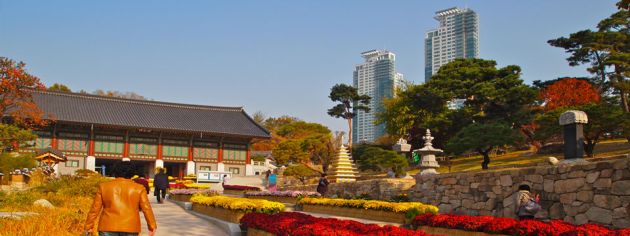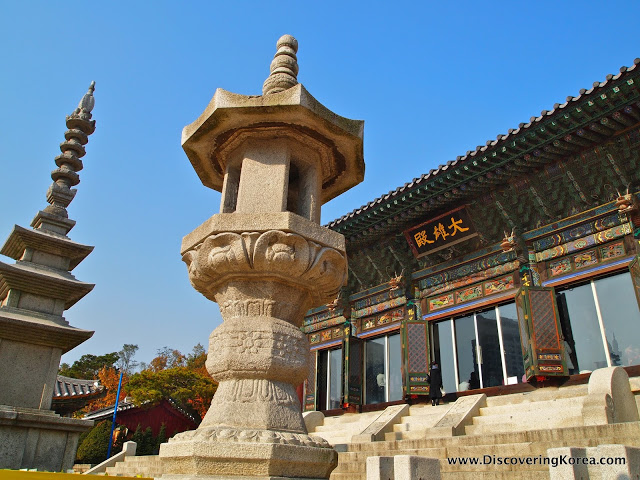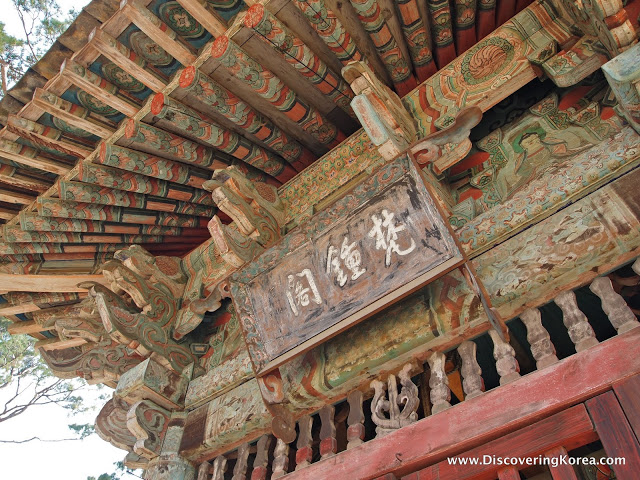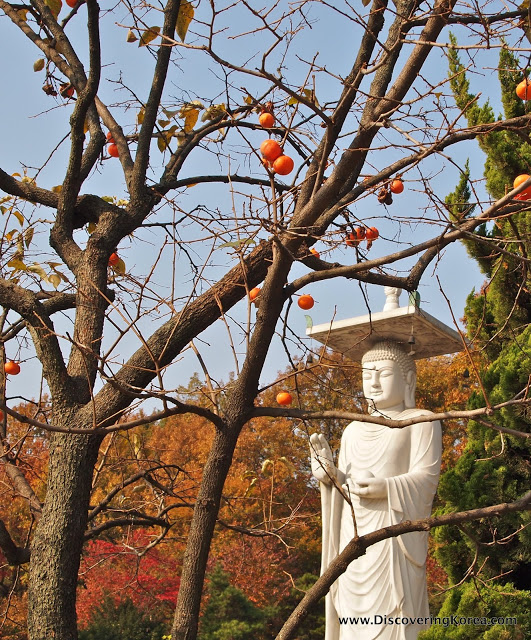Seoul Bongeunsa Buddhist temple (봉은사) is one of several Buddhist temples located within Seoul. However, unlike Bongwonsa Buddhist temple, Bongeunsa is also conspicuously set amongst skyscrapers and the busy, modern metropolis.

Located just across from the COEX trade and exhibition center in southern Seoul, Seoul Bongeunsa Buddhist temple affords the neighborhood a peaceful refuge for those who seek it.
Morning chanting at the temple begins each day at 4:00 am, hours before business begins across the street. The sprawling complex is a major temple of Korea’s Jogye Buddhist Order, a seon or zen sect.
Today, Seoul Bongeunsa Buddhist temple is located on the side of Sudosan mountain, but the original temple was built about one kilometer away over 1,200 years ago during the Silla Kingdom.

Despite the repression of Buddhism during the Joseon Dynasty, it was relocated to its current plant during the reign of King Myeongjong in the mid 16th century. Sadly, most of the temple complex was destroyed in a 1939 fire and during the Korean War.
Walking through the Seoul Bongeunsa Buddhist temple‘s main gates, you’re greeted by four large wooden sculptures representing the Heavenly Kings. The deities guard the four cardinal directions and the Dharma.
Although they are armed warriors, they show humorous rather than intimidating expressions. The same can’t be said of the warriors painted on the adjacent red doors. Recently, documents and relics were retrieved from inside the statues, which described their production in 1746.
The architecture of Seoul Bongeunsa Buddhist temple is similar to other Korean Buddhist temples. Red and green base paint is decorated with colorful and ornate painted flowers, mythical beasts and patterns.

As previously mentioned, most of the buildings were built in the modern era, but a precious few survived centuries of fire and war. Among them, Panjeon Hall is the oldest.
Completed in 1856, it holds 3,175 woodblock carvings of the Flower Garland Sutra. Also completed in 1856, the blocks are said to be a rare annotated version of the Avatamsaka Sutra, a key sutra of Mahayana Buddhism.
Probably the oldest structure at Seoul Bongeunsa Buddhist temple is the stone pagoda located in front of the main hall. Dating from the Silla era (668-935 AD), the three-story pagoda enshrines a piece of the Sakyamuni Buddha’s sarira.
The main hall, Daewoongjeon, is of much younger vintage, having been rebuilt in 1982. The stone staircase is engraved with dragons while inside the hall is the Sakyamuni Buddha between statues of the Bhaisagya and Amitabha and dozens of praying faithful, seemingly at any time of the day.
My favorite structure at Seoul Bongeunsa Buddhist temple is the Jonggak, a small belfry holding a 3.18-meter tall bronze bell. The structure’s fading paint makes it seem much older than its 1974 origin.

But the most prominent part of the temple complex is the massive, 23-meter-tall stone Buddha built upon a large stone plaza with a retaining wall pushing against the mountain. Other notable buildings enshrine indigenous Korean deities and facilitate the mourning of the dead.
Today, Seoul Bongeunsa Buddhist temple plays a major role in the life of many Seoulites, as an organizing temple of the annual Seoul Lotus Lantern Festival, which celebrates the Buddha’s birthday, and for its popular temple stay program where guests can live like a monk, if only for a day.
Bongeunsa is also the site of the Jeongdaebulsa, a ceremony held the 9th day of each 9th lunar month when monks carry sacred scriptures atop their heads while reciting Buddhist rites.
The ceremony and all major events are open to the public.
For Your Information…
| Open: | The Seoul Lotus Lantern Festival typically occurs in late January to early February. Morning chanting begins at 4:00 am |
| Admission Price: | Free |
| Address: | Gangnam-gu Samseong-dong 73 |
| Directions: | Samseong Station (#219) on Line 2, Exit 6; Cheongdam Station (#729) on Line 7, Exit 2 |
| Phone: | 02-3218-4800 |
| Website: |
About Matt Kelley
Matt Kelly is native of the US Pacific Northwest and is half-Korean by ethnicity. He lived in Korea for five years and has written hundreds of travel guides for Wallpaper, TimeOut, the Boston Globe and Seoul Magazine and was a host for several different variety shows on Korean radio and television.
